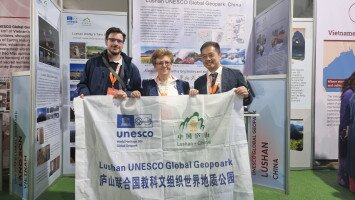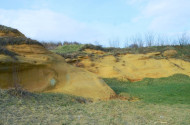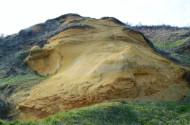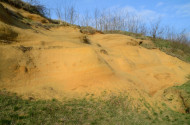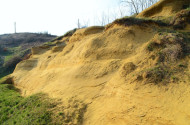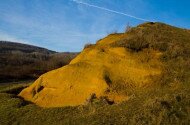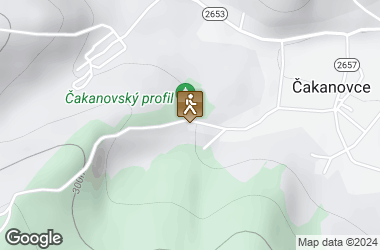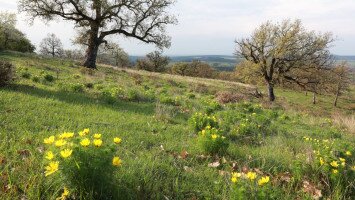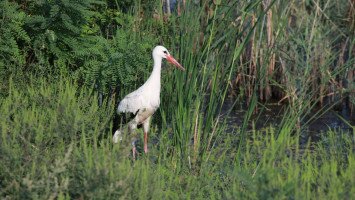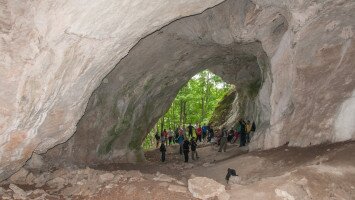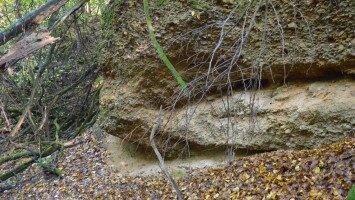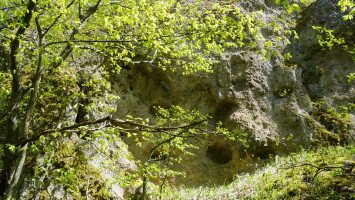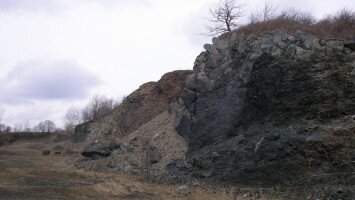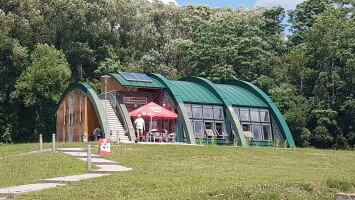West of the village Čakanovce, the sea and continental evolution of Lower Miocene in Cerova Vrchovina Upland can be observed.
It starts in an abandoned sand pit with the Tachty Sandstones, overlain by the Jalova Sandstones – glauconitic crossbedded sandstones, indicating the northward direction of sea water currents. Walking ahead along a filed path, the overlying Čakanovce member, composed of limy siltstone, shlay jointed, with thin-walled lamellibranchs and gastropods, can be observed. After sea regression the Čakanovce Member had been partly eroded and a new sedimentation took place under continental conditions. In a nearby pit dug on the crest, sediments of the Bukovinka Formation are preserved. They represent repeated cycles, consisting of alluvial gravels, inundation sands and flood plain to lacustrine variegated clays. At the end of the section, the rhyodacite tuff crops out overlain by the Potor member of the Salgotarjan Formation. The member consists of brown coal seam 0,65 m thick and yellow – brown alluvial sands. The coal seam was mined in 1924. Only remains of mining, collapsed galleries and dumps have been preserved. The mine was abandoned after 2-3 years of mining. The age og geological strata exposed in the geological section is the Early Miocene (Eggenburgian – Otnangian, 19 – 17,5 Ma). Larger brown cal reserves were situated westwards, on north – eastern slope of the Tri chotare Hill. The mining was carried out since 19th century till 1948, using galleries. Their adits and dumps are still visible.
